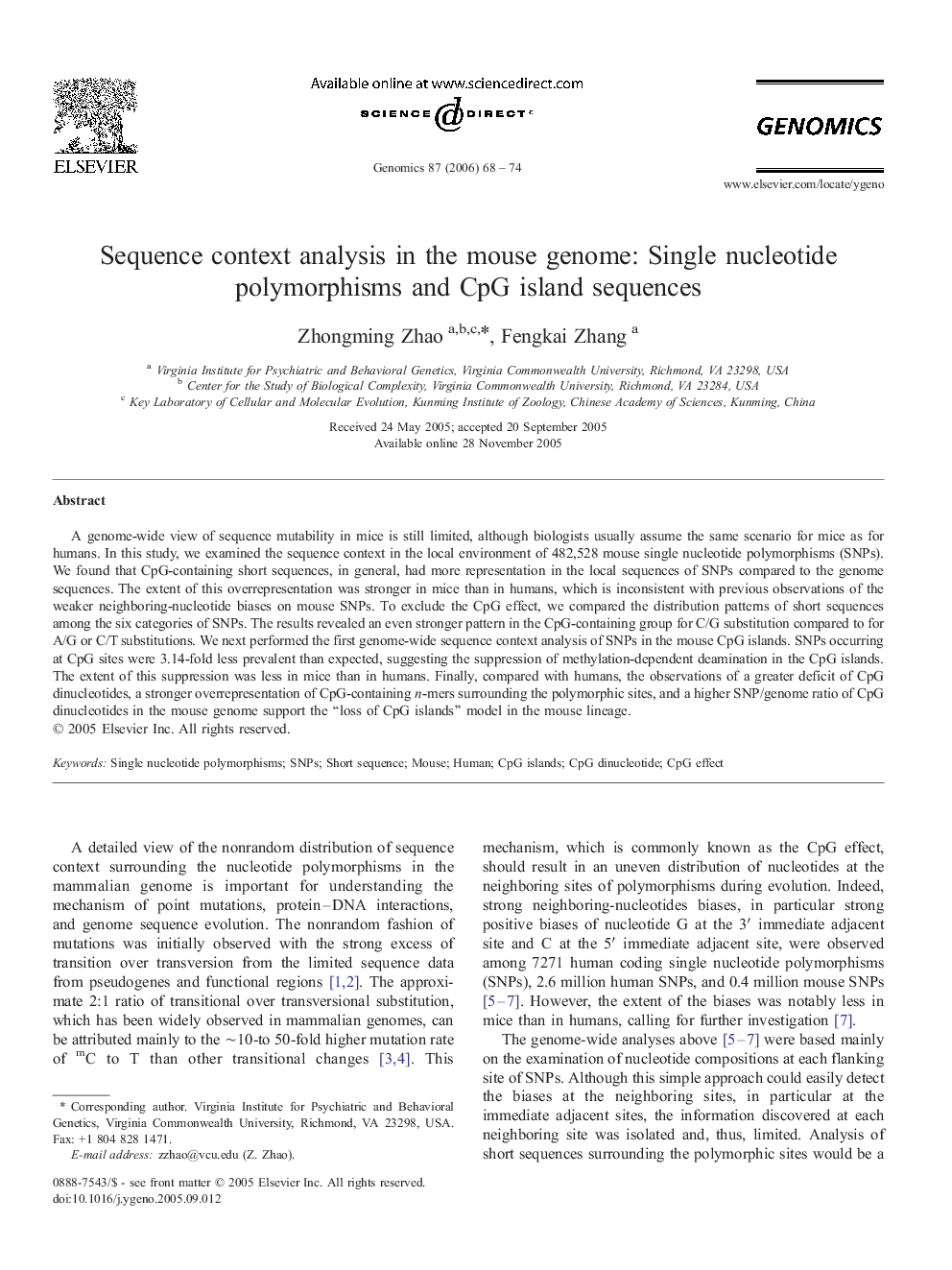| Article ID | Journal | Published Year | Pages | File Type |
|---|---|---|---|---|
| 2821778 | Genomics | 2006 | 7 Pages |
A genome-wide view of sequence mutability in mice is still limited, although biologists usually assume the same scenario for mice as for humans. In this study, we examined the sequence context in the local environment of 482,528 mouse single nucleotide polymorphisms (SNPs). We found that CpG-containing short sequences, in general, had more representation in the local sequences of SNPs compared to the genome sequences. The extent of this overrepresentation was stronger in mice than in humans, which is inconsistent with previous observations of the weaker neighboring-nucleotide biases on mouse SNPs. To exclude the CpG effect, we compared the distribution patterns of short sequences among the six categories of SNPs. The results revealed an even stronger pattern in the CpG-containing group for C/G substitution compared to for A/G or C/T substitutions. We next performed the first genome-wide sequence context analysis of SNPs in the mouse CpG islands. SNPs occurring at CpG sites were 3.14-fold less prevalent than expected, suggesting the suppression of methylation-dependent deamination in the CpG islands. The extent of this suppression was less in mice than in humans. Finally, compared with humans, the observations of a greater deficit of CpG dinucleotides, a stronger overrepresentation of CpG-containing n-mers surrounding the polymorphic sites, and a higher SNP/genome ratio of CpG dinucleotides in the mouse genome support the “loss of CpG islands” model in the mouse lineage.
